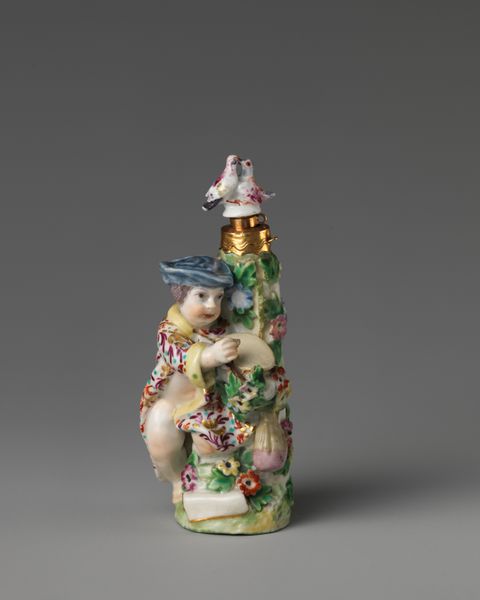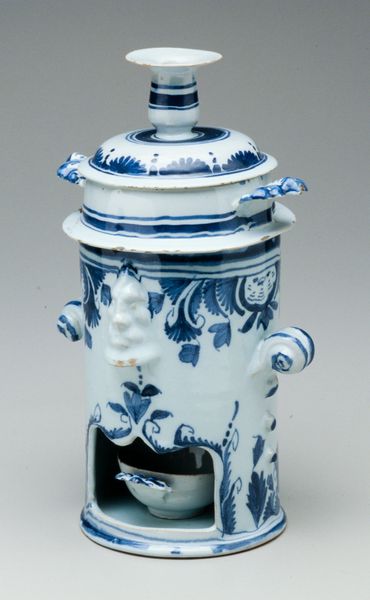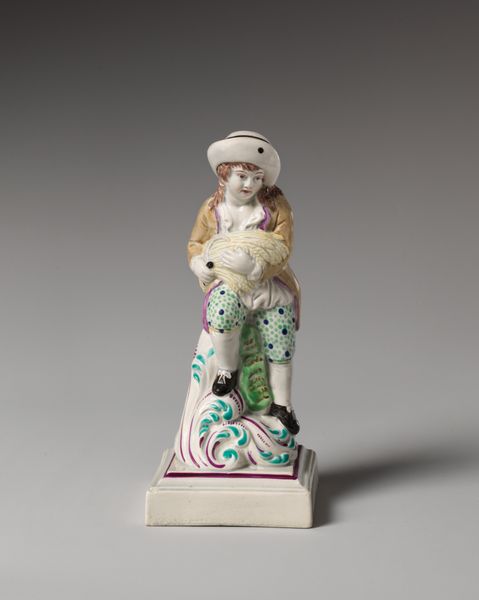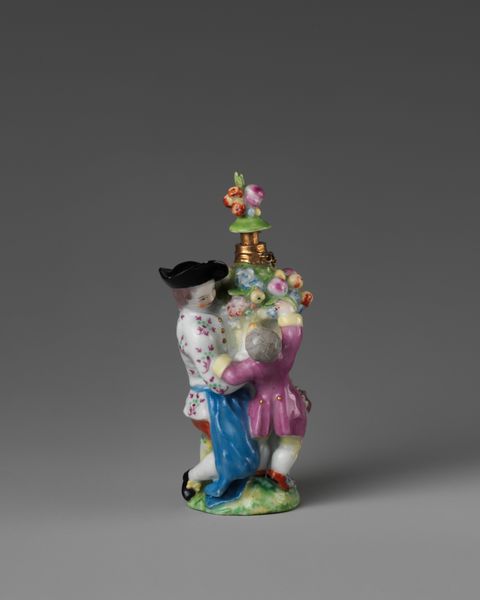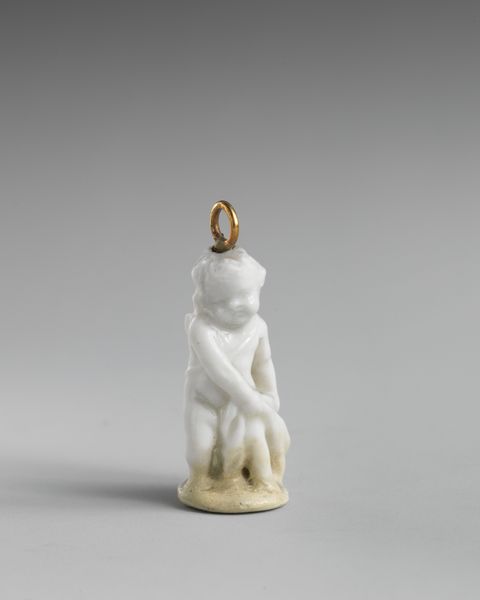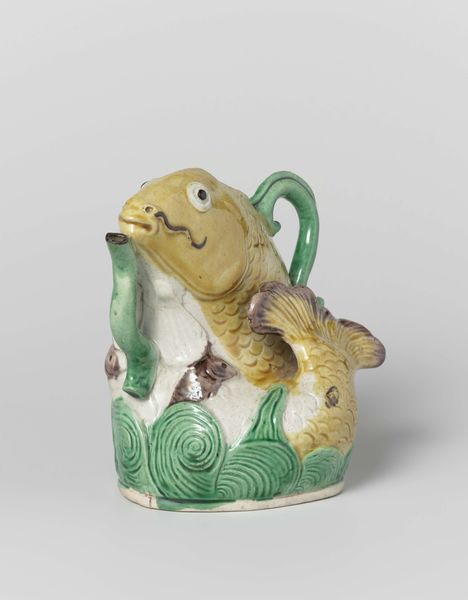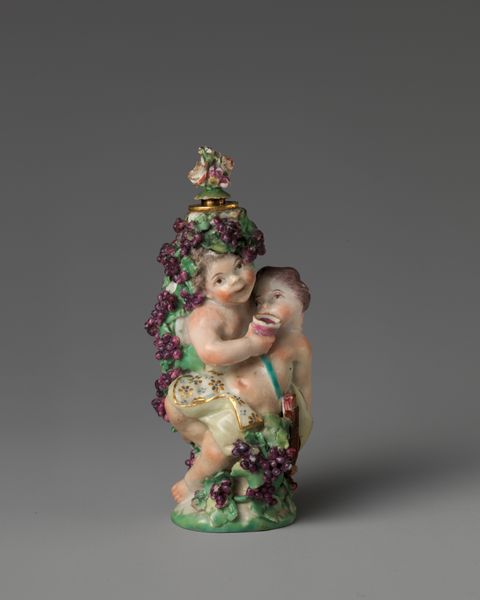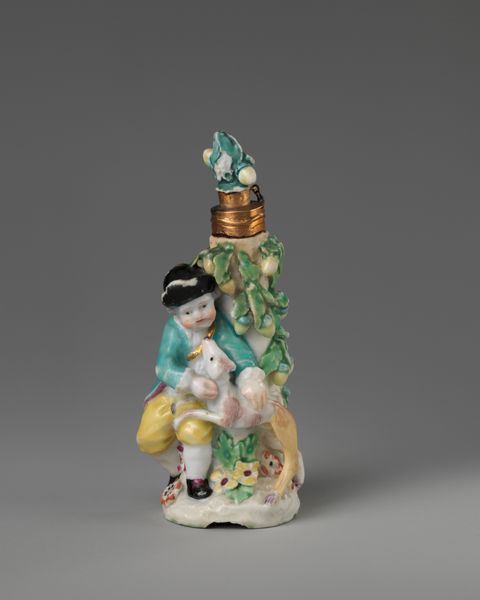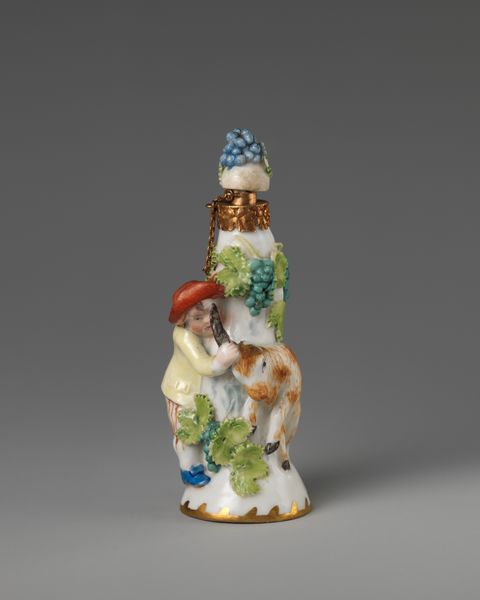
ceramic, earthenware
#
ceramic
#
figuration
#
earthenware
#
folk-art
#
genre-painting
Dimensions: height 19.0 cm, height 23.0 cm
Copyright: Rijks Museum: Open Domain
Editor: This is a jug from between 1900 and 1925, created by Gebr. Tichelaar, in the shape of a monkey with a nightcap! It's ceramic earthenware. It's quite whimsical. What do you make of it? Curator: What strikes me is the process. It's earthenware, so the material itself is common, earthly, quite literally from the ground. Yet it's transformed through labor, into this rather curious object, nodding to folk art and even genre painting. How does that tension – between the mundane material and the playful finished product – speak to you? Editor: I guess I hadn’t thought of it that way. I was just seeing a funny monkey-jug! Curator: Precisely. And what does it *mean*, the presentation of an animal performing such a human act with the added inscription? Where does such "folk art" come from? Whose labor went into it, and who was the jug *for*? These elements of production, labor and, indeed, *consumption* inform any aesthetic appraisal of this jug. Editor: That makes me consider its purpose; that it's not high art, hung on a wall and contemplated from afar, but that its artistic qualities also exist for someone's utility. Like how the glaze must impact the drinking experience! Curator: Indeed. The very means of its making shapes our understanding. Can we truly separate "art" from its process? Does such separation even serve us? Editor: So, by examining the materials and the process, we learn more about its place in society. I never would have thought about this jug in terms of labor before! Curator: Exactly. And hopefully you can use that method of enquiry with artworks from any period, in any material.
Comments
No comments
Be the first to comment and join the conversation on the ultimate creative platform.

